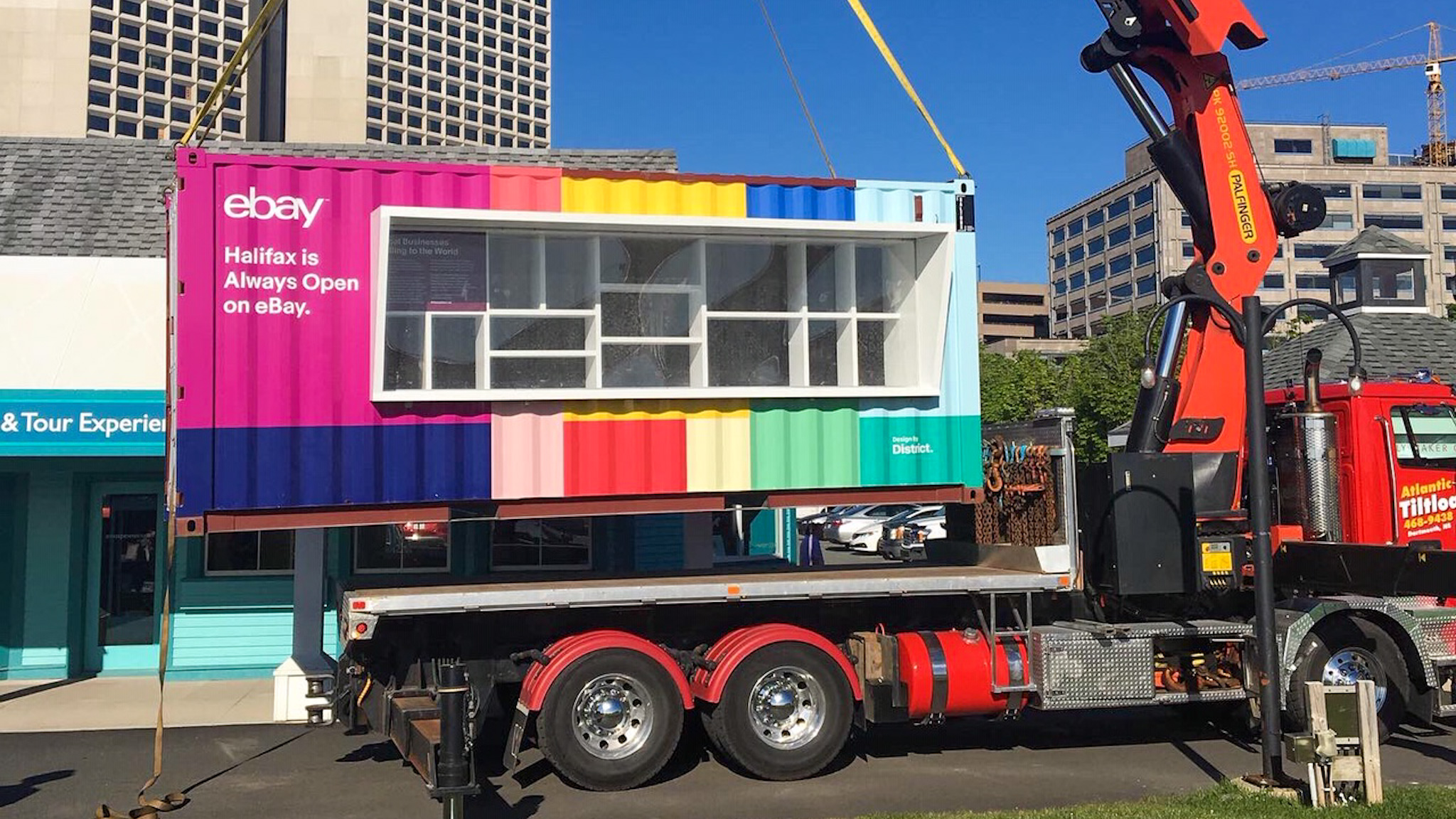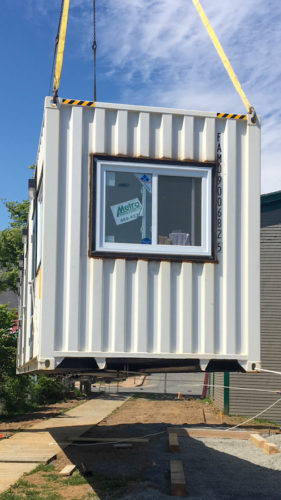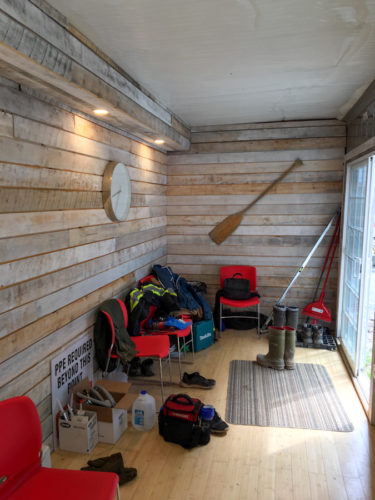Shipping container homes are on the rise, but Halifax is slow to ride the wave
Will shipping container homes be in HRM’s future? One expert doesn't think it's likely

caption
The eBay pop-up store that was placed on the waterfront last summer. Image provided by Saltbox Modern Engineered SpacesThe steel shipping container is a decades old cargo industry staple now being looked at in a totally new light.
But despite its rise in use and popularity, one expert has some ideas about why HRM might be slow to adopt shipping containers for homes.
The concept of using shipping containers for residential purposes is not new, but it exploded in Canada around 2013 when a three-storey development in Vancouver’s poorest neighbourhood was constructed using 12 decommissioned shipping containers.
As of 2017, the global container homes market size was worth about $45 billion.
In Halifax, businesses are slowly following suit when it comes to using shipping containers.
Stillwell Bar opened a pop-up beer garden in 2015 on the Halifax waterfront, with a building made from a reused shipping container, and eBay Canada set up a pop-up shop on the waterfront last summer also constructed from a shipping container.
While Halifax seems to welcome the shipping container trend, HRM policy has not quite caught up in the residential department. Shipping containers are still technically considered illegal in HRM when used for residential purposes.
HRM has more than 20 plan areas, which all have their own set of land use bylaws. All except six clearly prohibit using shipping containers for homes. Places that don’t prohibit them include downtown Halifax, Eastern Shore (East and West), Lake Echo/Porters Lake area, Lawrencetown and Musquodoboit Valley/Dutch Settlement area. The other plan areas only vaguely mention using shipping containers for homes.
Steve Mannell, director of the College of Sustainability at Dalhousie University, believes there are likely multiple reasons why HRM doesn’t allow shipping containers for residential use.
“Making a container which is designed as an industrial object comply with the rules that apply to buildings, it’s not really straight forward,” said Mannell in an interview.
Mannell also pointed out there may be community concerns stopping HRM from allowing shipping container homes.
When people picture shipping containers, he said, they don’t always imagine the idyllic architectural creations they’re often described as in design magazines but rather as unsightly makeshift sheds.

caption
This office was built to be used on the Halifax waterfront. It has since moved, and now sits on Zwicker’s Wharf in Lunenburg.“Culturally, there’s always been suspicion of movable buildings. There’s a certain amount of social stigma so they may also be worried about property value,” he added.
Mannell also believes there are overall structural concerns about shipping containers that people should consider before they buy.
He said where containers are designed to be sealed from the outside, there are issues with ventilation.
“There are some definite problems with the containers as far as building performance issues,” he said. “They’re all steel and they’re sealed so there can often be moisture problems if that’s not figured out.”
Mannell said people tend to become enamoured with certain aspects of shipping container homes.
“People are in love with the image of the container and the idea of reusing a container as opposed to actually using it as a practical solution to the problem of providing shelter,” said Mannell.
But while Mannell does not think shipping containers are practical for homes, he doesn’t think they’re useless — far from it. He just believes they’re better suited for business needs.
“Daytime markets or coffee shops or something where the environmental quality doesn’t have to be at the same level that it needs to be if it’s your bedroom or your living room,” said Mannell.
“You’d be doing better in terms of environmental impacts to send the containers to have the steel recycled and building something new out of more conventional building material.”
Greg Mullane, who co-runs Saltbox Modern Engineered Spaces with Keith Courage, disagrees. He believes shipping container homes are the future and they’re attracting more people for reasons other than sustainability.

caption
The interior of an office in downtown Halifax made from a recycled shipping container.“A lot of people don’t want the big mortgage anymore. Instead of a mortgage you can get a loan and have a container home paid off in a few years,” said Mullane in an interview.
The Nova Scotia-based Saltbox opened around 2014 and specializes in reusing and redesigning storage containers for businesses and residential purposes.
Mullane, who has background in landscape, construction, and the design-build industry, has done about seven builds so far and admits it can be a hard industry. But he said the business is only going up from here.
“I’ve had no issues on anything we’ve put in the marketplace so far. We get more and more inquiries everyday,” said Mullane.
Mullane is currently constructing three cottages outside of the province.
Mullane says HRM will actually allow some shipping container residential projects but it’s on a case by case basis as of right now.
The global container homes market size is expected to reach $73 billion by 2025, so whether or not HRM will follow suit on the trend remains to be seen.
“Shipping containers are coming. Small living is coming,” said Mullane. “Not everyone has seen what you can do with these things.”
About the author

Feleshia Chandler
Feleshia is a freelance journalist who has contributed to the Coast and Quench Magazine. She enjoys writing about feminist issues, LGBTQ issues...
